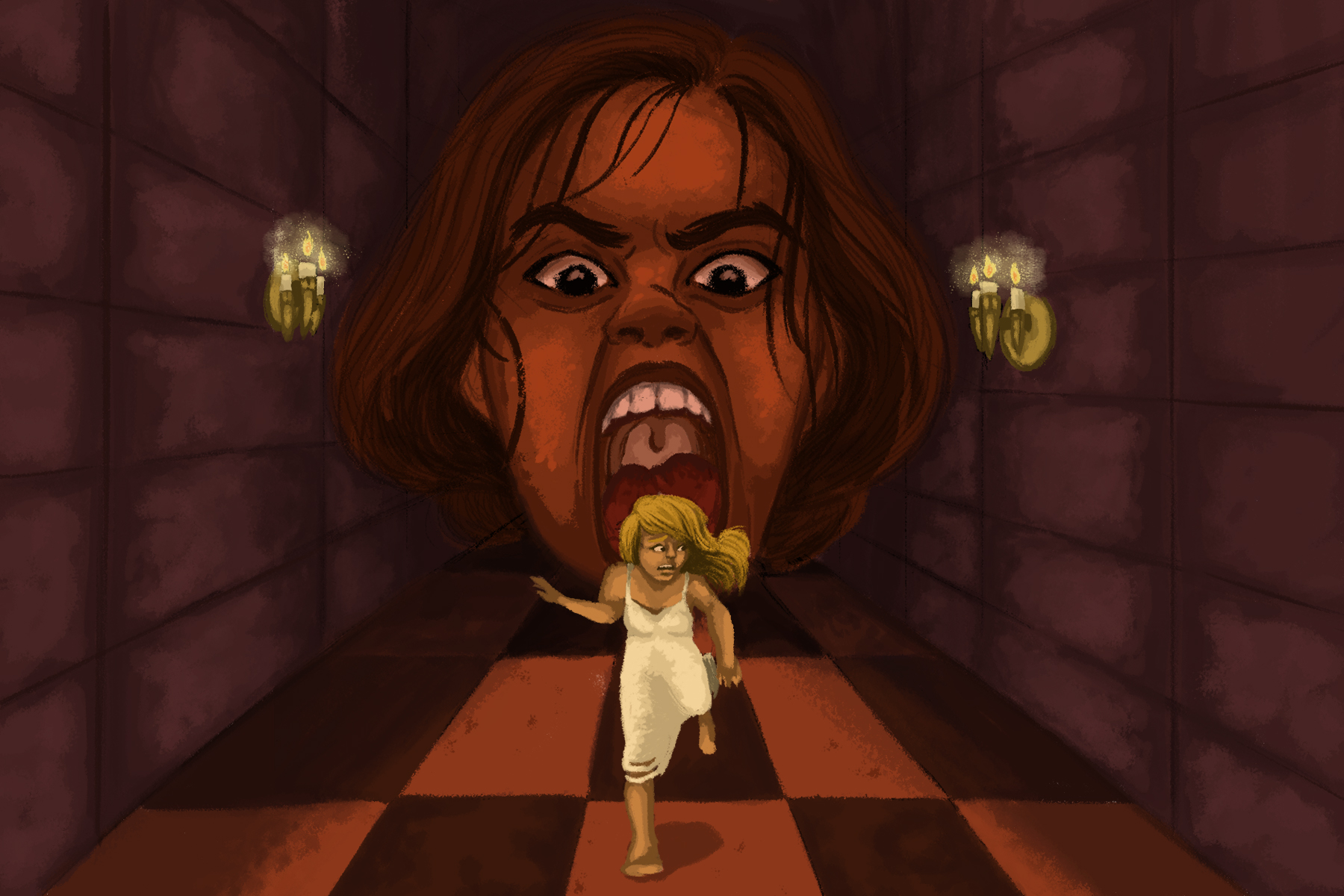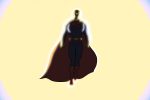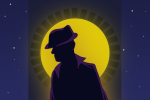Gothic fans rejoice, Emily Carroll has returned with yet another hauntingly stunning graphic novel, “When I Arrived at the Castle.” It’s the lesbian and vampiric erotic horror story you didn’t know you needed.
The elements of gothic literature are quite simple: there must be some sort of supernatural being, a gloomy setting, heroes, damsels and, of course, a tinge of romance. The genre’s most famous stories are Charlotte Bronte’s “Jane Eyre” and Jane Austen’s parody of the genre, “Northanger Abbey.”
If you’re already familiar with Carroll’s comics, then you’ll know that the Ontario-based artist is admired for her uncanny artwork that unleashes monstrosities and fairytale-esque creatures into the lives of seemingly ordinary characters.
“His Face All Red,” a comic released in 2010, is one of Carroll’s most well-known works. It tells the story of a young man who, jealous of his brother, commits murder. Later, at the village tavern, he comes face to face with a creature that looks eerily similar to his sibling.
In “The Prince & The Sea: A Romance,” a young prince and a beautiful siren live happily ever after on the siren’s terms in dark, “bleak ocean world/ ‘neath his green forest glade.”
Setting up a story to be frightening in a comic format is difficult, because a reader’s eyes tend to skip ahead to a further panel, spoiling the moment of horror. Comic artists must format their narratives in a way that leaves readers anxiously turning to the next page.
It’s part of building tension, something which Carroll has no problem doing. On one page, one of her characters opens a door from which a growing sound is coming. When you flip the page, the scares jump out at you, much like they would in a film. It’s unexpected, fun and absolutely horrifying.
Carroll’s illustrations are often accompanied by simple, poetic narration that is as beautiful as it is sinister, creating storylines that will leave you chilled to the bone. The narration doesn’t overpower the meaning behind the images, which speak for themselves, leaving scattered dialogue to give a glimpse into unfurling events.
In “Through the Woods,” Carroll’s first collection of comics published in 2014, unease underlines many of her short comics because of the ambiguous endings.
“There is a point in horror stories where you figure out how to defeat the evil thing, and once that happens it’s over,” Carroll said in an interview with Room on the ambiguity found within the horror genre. “I don’t want to wrap things up because I’d rather have that unease linger.”
“Through the Woods” triumphs, ending short comics on cliffhangers, like at the point where heroes are confronting a monster or a monster reveals itself to be someone close to home. As a reader, you can’t help but let your imagination wander and think of the worst possible outcomes. Your unconscious participation writes an ending for the story that Carroll does not have to write herself.
She has only gotten stronger with this clever writing tactic in her latest release with Koyama Press, “When I Arrived at the Castle.” Turmoil and unrest take shape as a woman with cat-like features comes to kill the vampiric Countess, who seems to be the villain. “When I Arrived at the Castle” is told through dominant shades of black and white, with startling red splashes to remind us just whose world we are entering.
“When I Arrived at the Castle” asks its readers to look beyond the obvious and seek meaning in the artwork that surpasses what is being said on the page. Unlike “Through the Woods,” this new edition is unafraid to use sexuality and the body to tell a story.
When the feline woman — let’s call her the Cat — arrives at the castle, the Countess is already anticipating her arrival as well as the reason she has come: to kill her. The Countess welcomes her, draws the Cat a bath, seduces her into dark waters and leaves her alone for a moment. Disturbed by a mysterious pounding, the Cat slips on a robe and beings to explore the crooks and corners of the castle.
The story isn’t told in a linear timeline, which only adds to the suspense. As the Cat journeys through the castle, readers get a sense of danger not only because the Countess is not human but also because of how the Cat describes her “revulsion” and fascination with her.
Because “When I Arrived at the Castle” is a story about the distinction between good and evil (and the grey area between), Carroll takes her time before revealing how the two women know each other. Instead, the fun is in unlocking the Countess’ secrets and how the stories of others who have come to the castle have ended.
The Cat has an unquestionable infatuation with the Countess, despite knowing her to be evil, and as the Countess changes and morphs into different versions of herself, so does the Cat.
Near the end, the two engage in a violent, erotic scene, and, in doing so, they transform one another. They claw and hiss at each other, which suggests they are involved in a sexual scene that is grotesque as opposed to romantic.
The way that Carroll has characterized the Countess redefines her vampirism — she not only clarifies what she is but also comments on her toxic need to have the Cat with her.
What happens when you confront your fears? You change. You cannot walk into a life-altering experience and come out of it as the same person. In “When I Arrived at the Castle,” Carroll warns readers of the danger lurking underneath being beautiful without warning us away from the monster inside ourselves.
So long, Bram Stoker. This is how vampire stories are written.
















